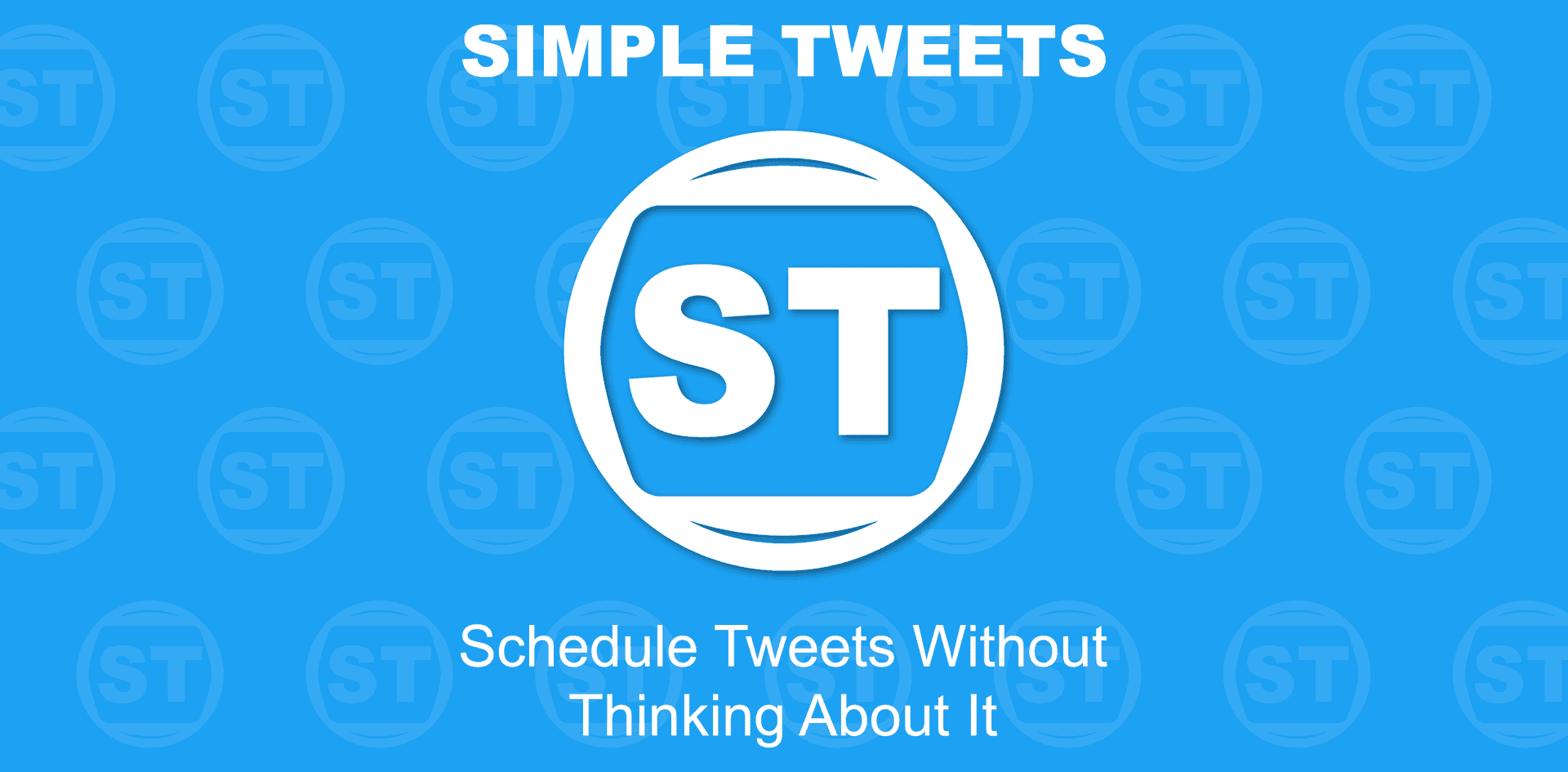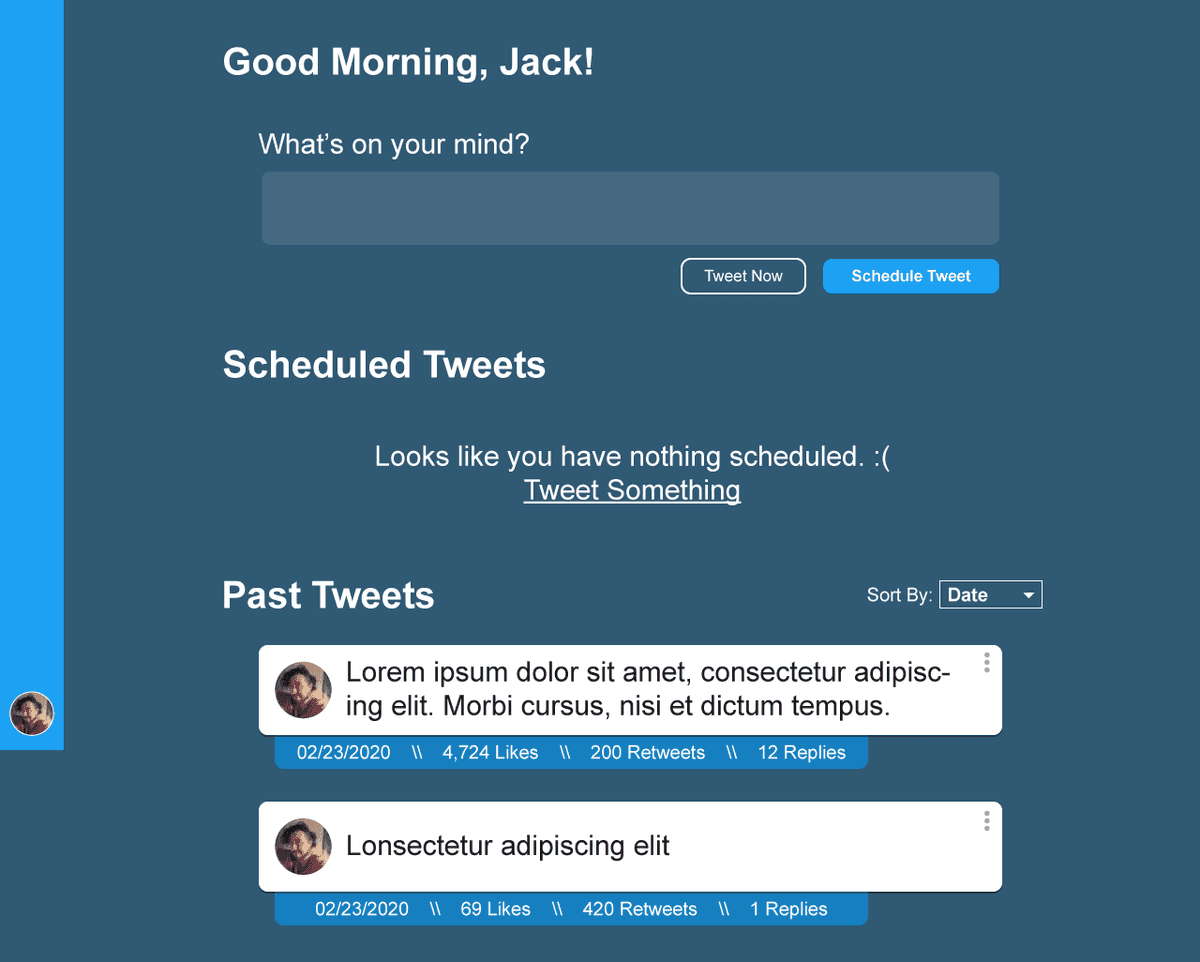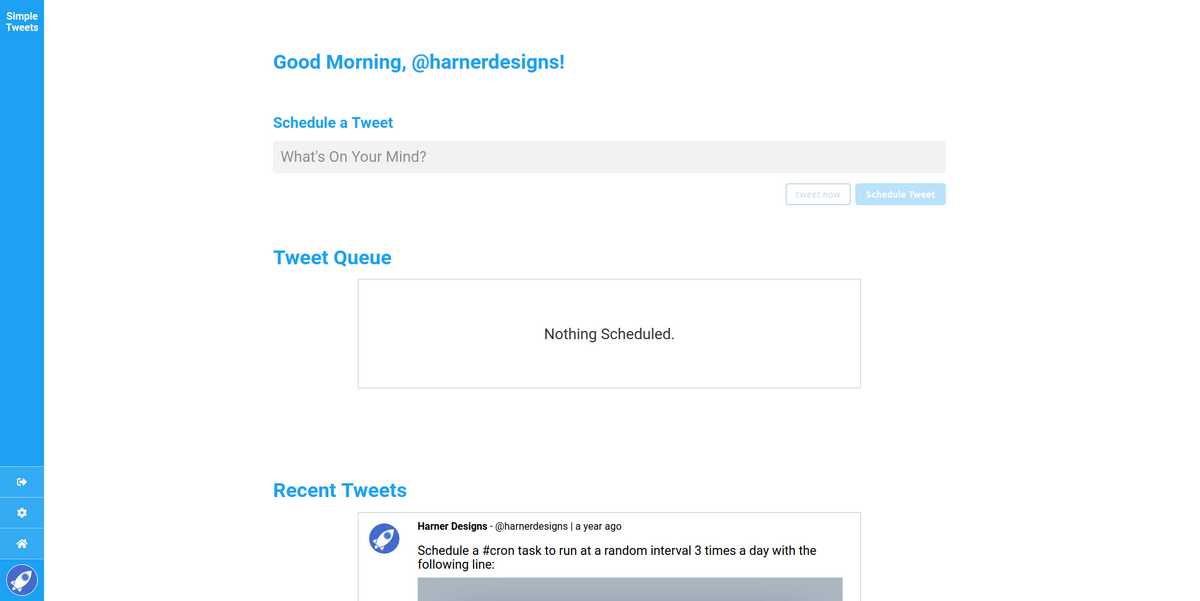Day 331 : Sunday, March 14th 2021
Wow. It's been a while. Just recently got my like 5th wind on this project and got a lot done in the last couple weeks.
Lots has happened.
Actually "Lots has happened" is an understatement.
- I fixed whatever login issues I was having back on Day 99 (Don't ask me what I did, I don't remember).
- I split the project into two seperate repos, one for the React Client, and the other for the Express Node server.
- Got Continuous Integration / Continuous Deployment set up for both halves of the project.
- Cleaned up a TON of the CSS to make things look better across devices.
- Totally revamped how I was handling "Sending Tweets". Which allowed for:
- You can schedule threads!
- Started integrating the Twitter API V2 to take advantage of Conversations.
- Laid out the ground work to do a Closed Beta of the project soon.
Scheduling Threads
I'm not entirely sure why, but getting this too work took a whole lot longer then I expected. I had to pretty much completely redo how I was managing the storage and processing of scheduled tweets. Initially I had stored the tweet text as just a string in the database. When it came time for that user to tweet, it would pull up the latest tweet in the queue, and POST the text to Twitter. Simple. One DB Record per One Tweet.
With threads it's a little different. I wanted Users to be able to schedule threads where the entire thread would go out at once. The solution I ended up going with was storing the whole text thread as an Array instead of a String. Unfortunately, at least that I found, there isn't a "POST THREAD" endpoint in the Twitter API (I think it's getting easier with V2 which I'm going to dive into later).
That leaves you to run through this loop:
- Pull the ParentTweet out of the DB
- Loop through the
full_textarray.- Create a new Tweet in the DB
- Send that Tweet to Twitter
- Receive the ID of the Successful Tweet from Twitter
- Store all that on the individual Tweet record in the DB
- Pass that ID to the next item in the array
- Repeat.
- Wait for all that to be done and mark the ParentTweet as either
errorortweeteddepending on the response.
From my understanding of V2 of the Twitter API is that instead of passing the Tweeted ID on to the next one in the loop, I would just pass in the Conversation ID from the first Tweet, and any subsequent tweets to that Conversation ID will show up as a thread, at the end of the thread. (I haven't fully dove into it yet so this might be totally wrong).
From Mono-Repo to Multi-Repo
I was having issues getting a Continuous Deployment workflow running for the project. I was using a self hosted version of Jenkins to do some code running stuff till one day I pushed some changes and nothing happened. I logged in to Jenkins and it wasn't even recognizing the Repo existed. Strange.
I fought with it for a while but eventually gave up.
I decided to switch things over to GitHub Actions so I wouldn't have to mess with Jenkins anymore. I started busting out a rather complex workflow to deploy both halves of the App at the same time. I wasn't able to get it to work and I figured now was the time to separate the backend and the frontend into their own repos.
Since a React app has different CI/CD requirements than a Node Express Server, it was something I probably should've just done from the beginning. Hey, at least I learned something.
To split them up I renamed the project folder to simple-tweets- and created a brand new simple-tweets folder. I then created individual api and client folders and moved the files from the original folder to their new home. Connecting each directory to their respective new GitHub repos and sent up the changes.
Biggest Downside I had with this is that I lost the file history from before the move. I'm sure there are ways to manage that migration while maintaining the history but I decided it wasn't worth looking into for me (and also another reason to split them from the beginning).
CI / CD Setup
Express API
For the API it's super simple. On my Ubuntu server I made sure I had git installed and cloned the API Repo using a Deployment Key. Then setup a brand new locked down SSH User that GitHub could use to run commands within specific folders on my server.
Since I haven't setup any sort of testing on the project yet, there's not a whole lot that the GitHub Workflow is actually doing. Runs through a "Testing" step that does nothing, and once that's done SSHs into my server, pulls the latest commit from GitHub and Restarts PM2 ( The Node Process Manager ) which starts the API back up with the latest code.
on:
push:
branches:
- main
jobs:
test:
runs-on: ubuntu-latest
steps:
- uses: actions/checkout@v2
- uses: actions/setup-node@v1
with:
node-version: 14
deploy:
needs: [test]
runs-on: ubuntu-latest
steps:
- name: SSH and deploy node app
uses: appleboy/ssh-action@master
with:
host: ${{ secrets.SSH_HOST }}
username: ${{ secrets.SSH_USERNAME }}
key: ${{ secrets.SSH_KEY }}
port: ${{ secrets.SSH_PORT }}
script: |
cd ${{ secrets.API_DIR }}
git pull origin main
yarn --production
pm2 restart serverReact App
Since there's actually a Build step when using Create-React-App, the React CI/CD workflow has a few more steps. It's not as complicated, but I was ripping my hair out trying to get it to work.
No matter what, running yarn build locally would work, but just wouldn't complete in the GitHub Action. Well it turns out GitHub Actions (and most CI platforms) sets the CI environment variable to True. This causes the Create React App Build Scripts to treat every warning like an error in the build.
On one hand it makes sense, you shouldn't be pushing projects with ESLint Errors but as a solo dev, I ain't got time for that. The solution I figured out was you have to explicitly set CI=false in your Workflow file when running yarn build:
steps:
- # ...
- name: Install Dependencies
run: yarn
- name: Build
run: CI="false" yarn buildFrom there the ./build directory contains the static files that get SFTP'd with the same SSH user as the API to the site directory on the server.
Mobile Version CSS Cleanup
I spend a lot of time on my phone and having Simple Tweets work on all devices is absolutely necessary. It wasn't that hard to get things looking fresh and clean on the phones, but it was something I'd been putting off in favor of more fuctionality based fixes.

Now I can use it on the go, and dump some tweets out of my mind, wherever I am!
Closed Beta Coming Soon!
Up until know, someone could've found the url for the beta version, log in with their Twitter and use the App. I got that locked down so only select accounts can log in to the Beta. I'm going to be reaching out to a handful of Twitter friends in the coming days to see if they'd be willing to help me test some stuff. Shoot me a DM on Twitter if you want to help out.
What's Next
The last piece that I need to figure out is how to upload and schedule pictures with tweets. I'm hoping to figure out how to make that work without having to store any user files, since that can get huge. I think I'll be able to just send the file directly from the users browser to Twitter and then store the Media ID for posting eventually. That really depends on Twitter's media deletion strategy ( do they delete media that didn't get attached to a tweet within 2 hours? Weeks? never? ) Just more I'll have to research.


